May 24, 2025 | 07:03 GMT +7
May 24, 2025 | 07:03 GMT +7
Hotline: 0913.378.918
May 24, 2025 | 07:03 GMT +7
Hotline: 0913.378.918
Editor's note: Amidst the peak of salinity drought in 2024 in the Mekong Delta, the region's sewer system and irrigation works have proven highly effective upon implementation. Reporters from the Vietnam Agriculture News ventured into the heart of the drought and salinity, capturing firsthand accounts and witnessing remarkable transformations in project areas.
In the scorching heat of mid-March, we traveled from Can Tho City along Highway 1A to Nga Bay town and then took the Quan Lo - Phung Hiep route to Ninh Quoi A commune, Hong Dan district, Bac Lieu province. Despite the peak of the drought season, residents here remain enthusiastic about harvesting winter-spring rice.
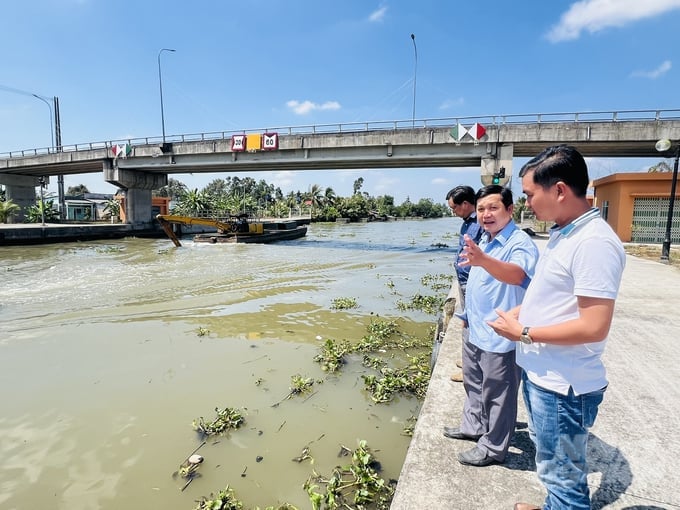
Ninh Quoi A commune official visiting Ninh Quoi sluice. Photo: Trong Linh.
The Ninh Quoi sluice gate stands majestically, separating the freshwater from the saltwater streams. Observing an elderly farmer rowing a canoe across the river after the rice harvest, I asked, "Did you have a good rice harvest, Mr. Vong?" "More than 8 tons per hectare, not bad," replied Mr. Vong.
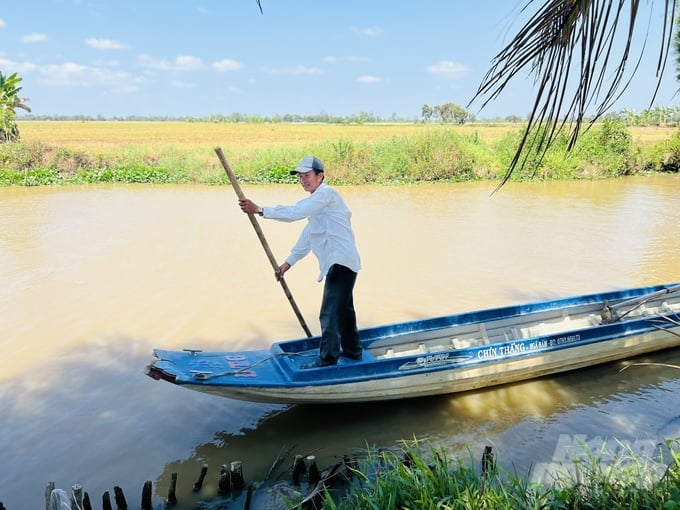
Mr. Vong expressed happiness when he just finished harvesting rice. Photo: Trong Linh.
Mr. Pham Van Vong, 55 years old, residing in Ninh Loi hamlet, Ninh Quoi A commune, Hong Dan district, shared that during the 2023-2024 winter-spring rice crop, his family cultivated over 4 hectares, diligently following the seasonal schedule recommended by the agricultural industry. As a result, they achieved exceptionally high yields, averaging 8.4 - 8.5 tons per hectare. With a selling price of 8,300 VND per kilogram, after deducting expenses, the profit exceeded 60 million VND per hectare.
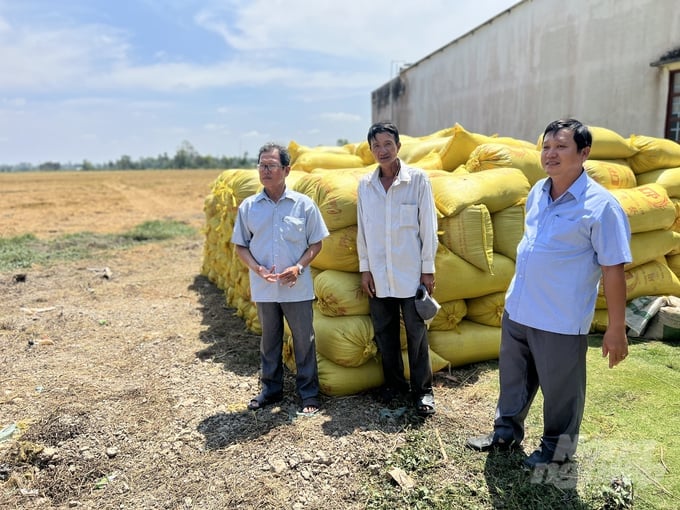
Mr. Vong said that for the past 3 years, since the Ninh Quoi sluice was installed to regulate fresh and saltwater, every rice crop has had a successful harvest. Photo: Trong Linh.
According to Mr. Vong, prior to the operation of the Ninh Quoi sluice gate, saltwater overflowed from the Ho Phong and Gia Rai sluices, leading people to construct makeshift dams along the 3/2 canal to prevent saltwater intrusion. However, insufficient fresh water was still pumped into the fields, resulting in five canals remaining dry for several months.
"Over the past three years, since the Ninh Quoi sluice gate began operating, whenever saltwater encroached, the sluice would be closed, allowing freshwater from Nga Nam to flow down abundantly. This not only facilitated agricultural production but also enabled barges carrying rice harvesters and rice-purchasing boats to access people's fields. Consequently, every rice-growing season has been successful," Mr. Vong joyfully shared.
Farmer Nguyen Hoang Hai from Ninh Loi hamlet, Ninh Quoi A commune, shared his experience: "Before the Ninh Quoi sluice gate was operational, saltwater penetrated deep into the fields. During dry years, people risked their lives by pumping water from outside, yet the rice would eventually wither and become completely damaged. Since the sluice gate was installed, farmers have not only been able to cultivate rice effectively but also have taken the initiative to grow vegetables without fear of water scarcity."
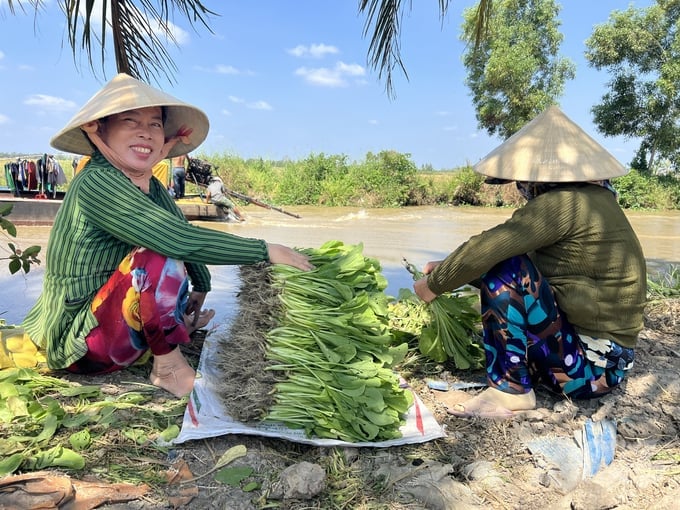
Without worrying about lack of fresh water, people actively grow vegetables to increase their income. Photo: Trong Linh.
Echoing this sentiment, Mr. Tran Van Ghi from Ninh Quoi commune, Hong Dan district, expressed, "During this year's dry season, there has been no shortage of freshwater. The Ninh Quoi sluice gate has effectively regulated saltwater and freshwater, resulting in highly successful rice production and significantly increased productivity compared to a few years ago.
Mr. Nguyen Van Khoi, Vice Chairman of the People's Committee of Ninh Quoi A commune, explained that the commune is situated along the Cau Sap - Ngan Dua route and the Quan Lo - Phung Hiep route. Previously, during the winter-spring and summer-autumn rice seasons, the locality had to reconstruct dams to prevent saltwater intrusion into the fields. Consequently, they primarily relied on stored water from canals and ditches inside the dam, as accessing freshwater from the Quan Lo - Phung Hiep canal was impractical.
According to Mr. Khoi, after constructing the Ninh Quoi sluice gate, surrounding canals were also equipped with appropriately sized culverts and concretized in a synchronized manner to manage salinity effectively. The operation of the sluice gates is proactive, adhering to the water regulation schedule set by the Department of Agriculture and Rural Development every two weeks. This proactive approach allows for smooth agricultural production, ensuring success in each season.
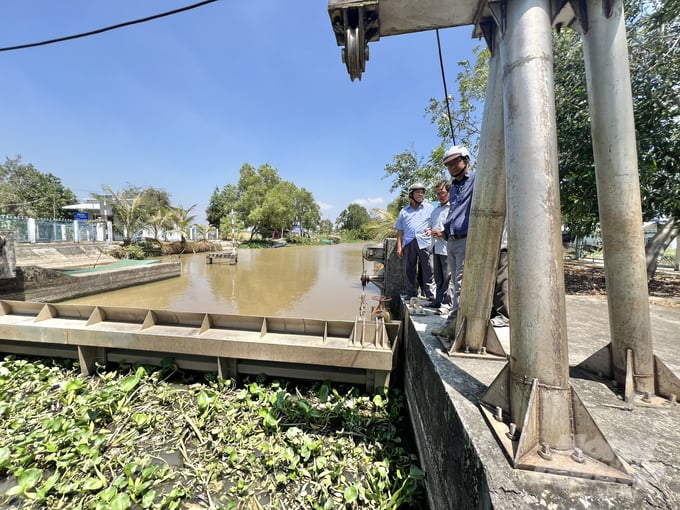
The constructions are invested synchronously, controlling salt and freshwater and maximizing efficiency. Photo: Trong Linh.
Mr. Nguyen Ky Phong, an official at the Center for Management of Irrigation Works in Bac Lieu province, noted that thanks to the Ninh Quoi sluice gate, saltwater intrusion into the freshwater area of Nga Nam town no longer occurs. In previous years, salinity had penetrated through Nga Nam, reaching depths of more than 10 kilometers into the interior fields, significantly impacting agricultural production.
Mr. Ngo Nguyen Phong, Deputy Director of the Department of Agriculture and Rural Development of Bac Lieu province, stressed that when the Ninh Quoi sluice gate is closed, salt water does not intrude into the freshwater area dedicated to rice production in Nga Nam town. Instead, it redirects the water, pushing salinity deep into the aquaculture area of Hong Dan district. When regulating water, it ensures the appropriate balance of water and salinity for the rice-shrimp farming areas at Nga Ba Dinh, Vinh Loc, Vinh Loc A, Loc Ninh, and beyond.
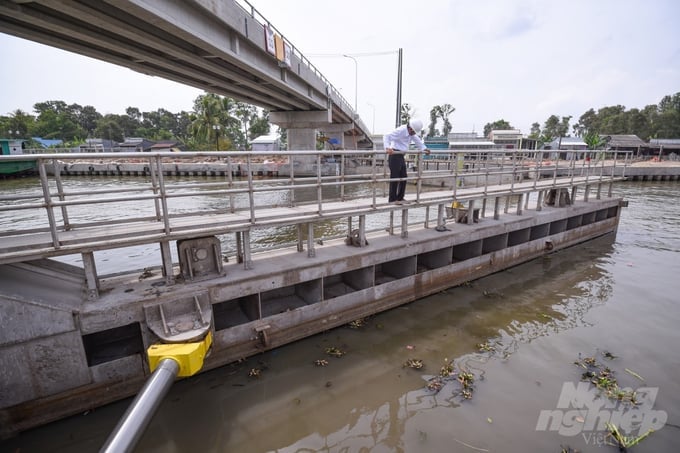
Through two fierce dry seasons, the Ninh Quoi sluice gate has proven effective. Photo: Trong Linh.
The Ninh Quoi sluice project has brought joy to farmers in Bac Lieu, Soc Trang, Ca Mau provinces, and parts of Hau Giang province just over three years since its inauguration.
Chairman of the Bac Lieu Provincial People's Committee, Pham Van Thieu, emphasized that drawing from the lessons learned during the severe drought and saltwater intrusion in 2015-2016 and 2019-2020, Bac Lieu province has been proactive in directing drought and saltwater intrusion prevention efforts. As of the end of March 2024, agricultural production areas in the province remain safeguarded against salinity drought during the 2023-2024 dry season, ensuring safety for production with no significant damage reported.
Efforts to prevent and mitigate saltwater intrusion in localities are being promptly executed. In particular, the operation of the Ninh Quoi sluice gate has provided significant support for winter-spring rice production.
In Soc Trang, Mr. Hong Minh Nhat, Head of the Economic Department of Nga Nam Town, shared his insights: 'Since the commencement of operations of the Ninh Quoi sluice gate over three years ago, the project has successfully met the requirements for preventing salinity caused by the inflow of saltwater from the Phung Hiep canal into Nga Nam town. Without the Ninh Quoi sluice gate, the freshwater area of Nga Nam would undoubtedly suffer significant impacts.
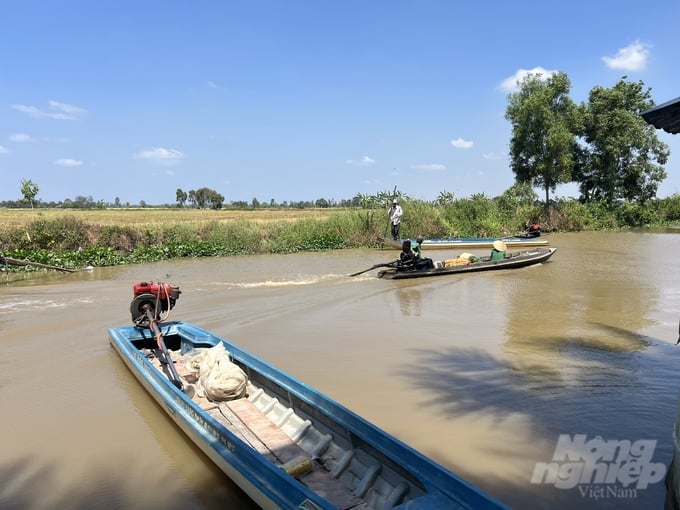
Thanks to proactive response and building scenarios in advance, the dry season of 2023 - 2024 in Bac Lieu province has not been significantly affected. Photo: Trong Linh.
In the winter-spring rice crop of 2023-2024, Bac Lieu province cultivated over 45,000 hectares. To date, more than 10,000 hectares have been harvested with an average yield of 8 - 8.5 tons per hectare, and full harvest is expected by the end of April. The entire province has cultivated over 46,850 hectares for the rice-shrimp crop, with harvesting already completed and an average yield exceeding 5.8 tons per hectare.
Translated by Quynh Chi

(VAN) The People's Committee of Tra Vinh province has approved an adjustment to the investment policy for the Green Hydrogen Plant project, increasing its area to approximately 52.76 hectares.
![Reducing emissions from rice fields: [2] Farmers’ commitment to the soil](https://t.ex-cdn.com/nongnghiepmoitruong.vn/608w/files/news/2025/05/05/dsc08881jpg-nongnghiep-140632.jpg)
(VAN) Clean rice cultivation model in Thuong Tan commune, Bac Tan Uyen district, is assisting local residents in achieving sustainable agriculture by substantially reducing costs, increasing productivity, and protecting the environment.

(VAN) At the conference to disseminate Resolution No. 68, AgriS introduced its digital agricultural ecosystem and reaffirmed its commitment to accompanying the Government in promoting private sector development and sustainable agriculture.

(VAN) 'Blue Ocean - Blue Foods' initiative is designed to restore marine ecosystems and establish sustainable livelihoods for local communities by cultivating a minimum of 1,000 hectares of cottonii seaweed in the first three years.
/2025/05/21/4642-3-112707_603.jpg)
(VAN) The V-SCOPE project has made direct contributions to three out of six pillars of the Comprehensive Strategic Partnership between Vietnam and Australia.

(VAN) Facing the threat of rabies spreading to the community, Gia Lai province urgently carries out measures to vaccinate dogs and cats on a large scale.

(VAN) Disease-free livestock farming not only protects livestock herds but also stabilizes production and livelihoods for many farmers in Tuyen Quang.